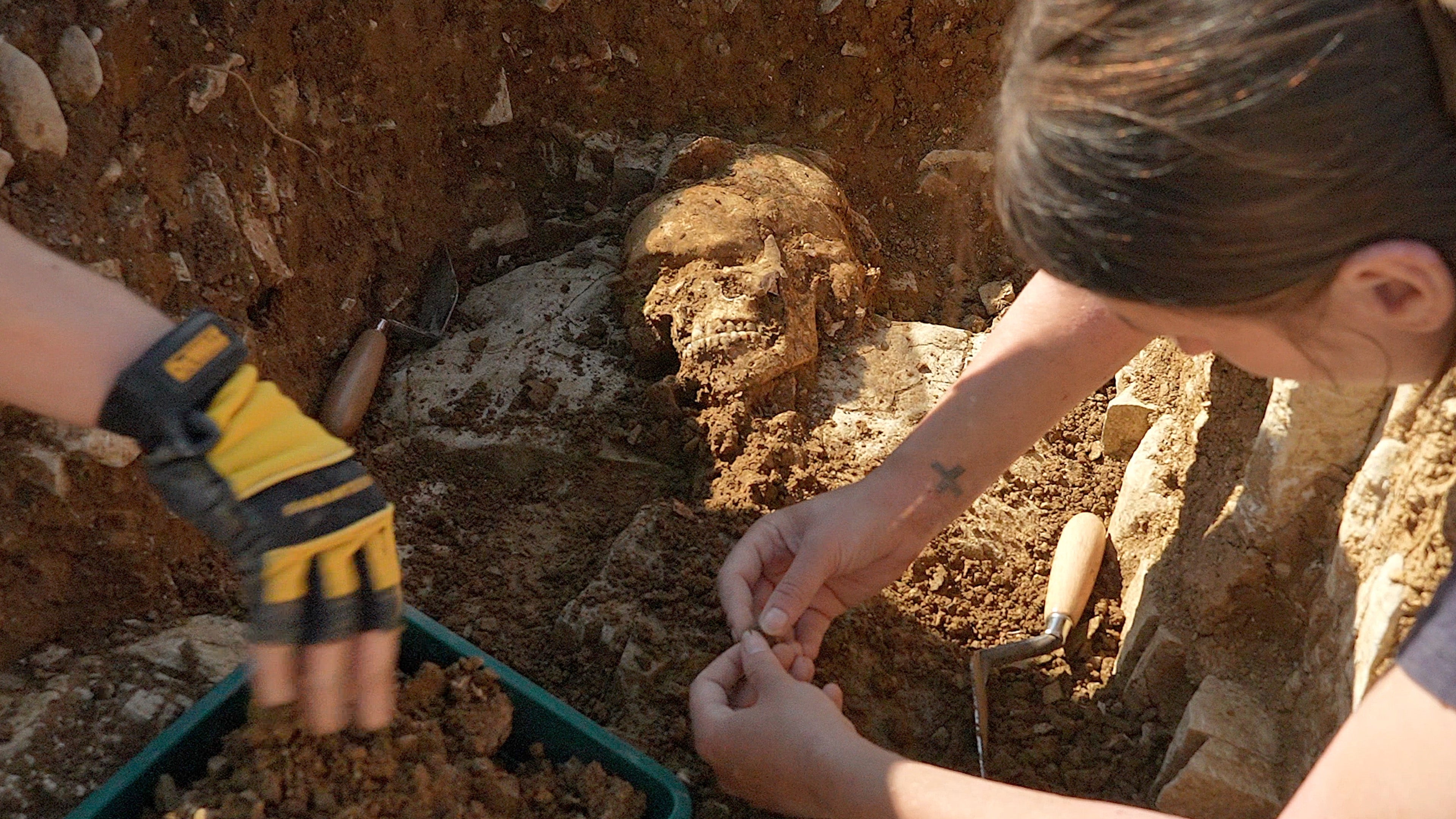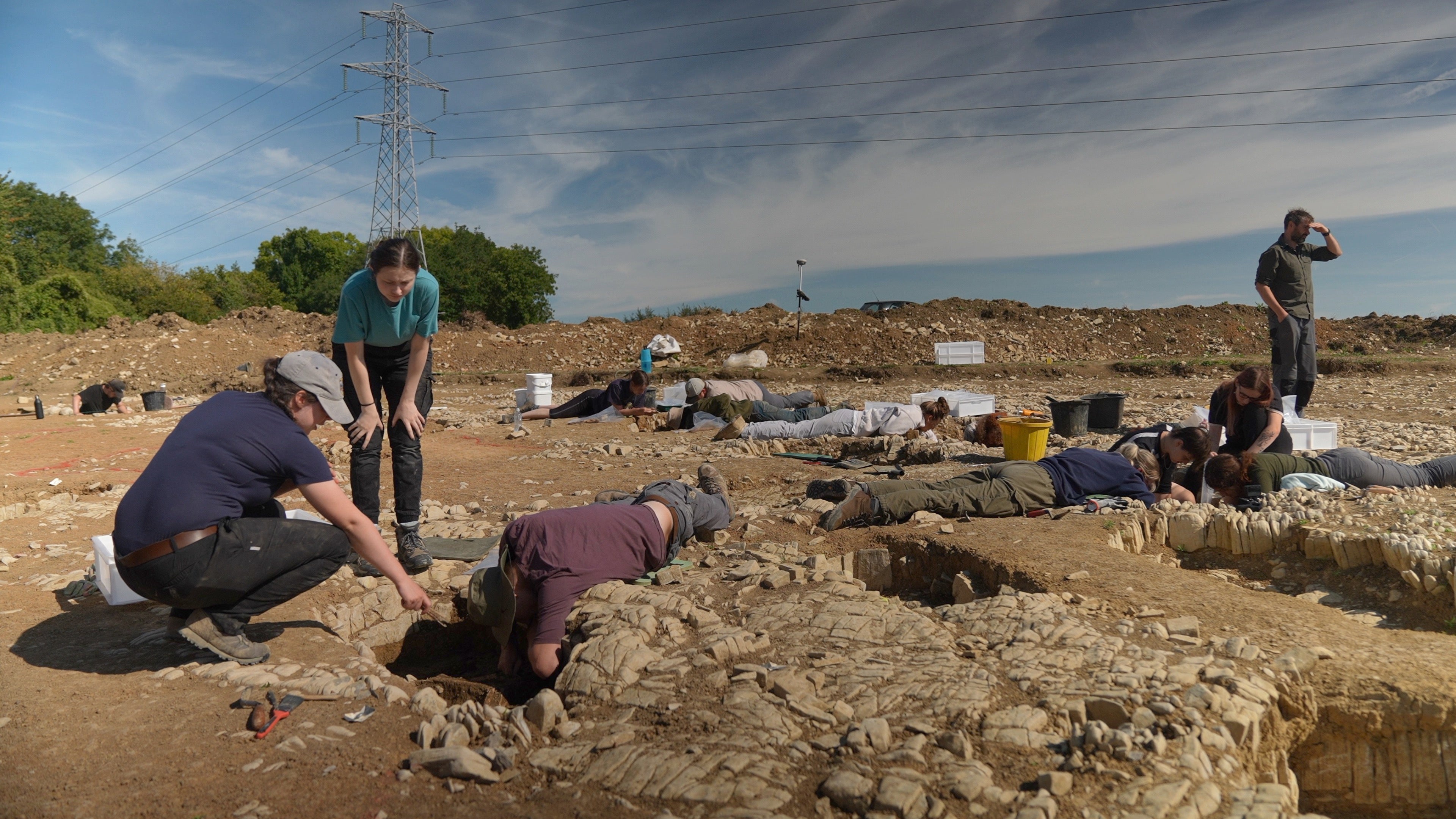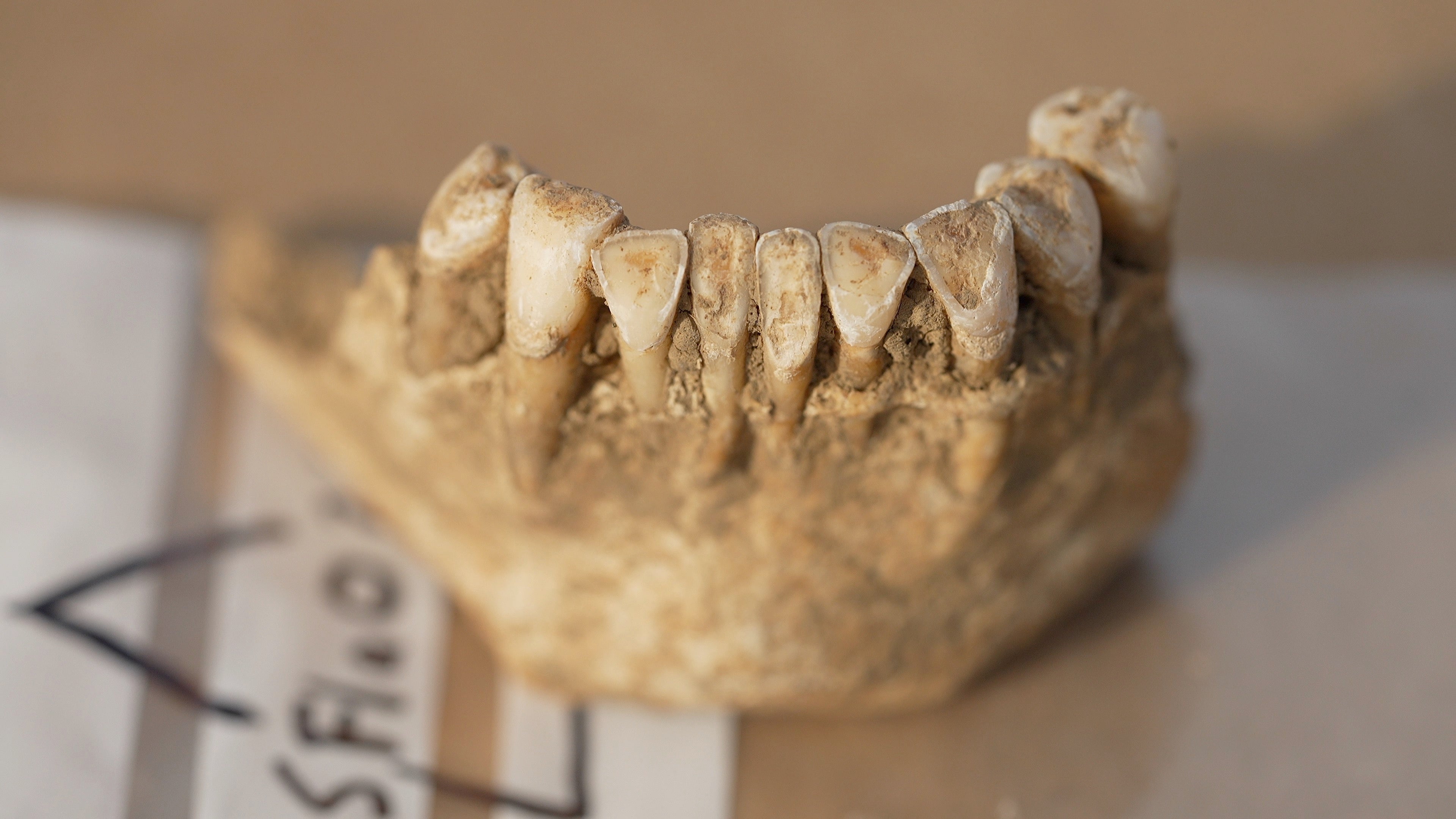Mysterious medieval cemetery unearthed in Wales
Archeologists have been left confused by the discovery on the grounds of Fonmon Castle, Cardiff

Archeologists have discovered an ancient medieval graveyard dating back to the 6th or 7th Century in Wales.
The cemetery is located near the end of the runway at Cardiff Airport in an field on the grounds of Fonmon Castle.
Some unusual artefacts have been unearthed from the site including 18 graves - out of an estimated 70 - and well preserved skeletons.
Archeologists say they have been left confused by the discovery, which is raising more questions than answers.

Over the last two summers researchers from the University of Reading and Cardiff University carefully removed a thin layer of topsoil to expose the graves that was buried centuries ago.
Summer Courts, an osteoarchaeologist from the University of Reading, said the skeletons are well preserved despite being more than 1,500 years old.
“We have some teeth that are very worn in a kind of a funny way that might indicate the use of teeth as tools,” she told the BBC.
“Maybe for textile work, leather work or basketry - they’re pulling something through their front teeth.”

According to the archaeologists the skeletons were found in a variety of positions - some were buried in a crouching position with their knees tucked up against their chest while others were flat on their backs.
They also found fragments of pottery dishes as well as splinters of animal bones and glass.
Dr Andy Seaman from the University of Cardiff - who is leading the digging team - said unlike cemeteries now, what they have unearthed may have had more uses than just burying the dead.
He told the BBC: “We tend to think of graveyards as sort of enclosed spaces that we don’t really go to, but they probably would have been quite central to life in the past.”
“And it’s not just a place for people being buried, but it’s a place where communities are coming together: they are burying their dead, but they’re also undertaking other forms of activity, and social practice, including eating and drinking - and feasting”.
The researchers are still unsure of the precise date for when the graveyard was in use, and further analysis of the skeletons will allow them to narrow down the time frame.
However, questions remain about who actually lived and died at the site - a question that may not have an answer for a long time.
Join our commenting forum
Join thought-provoking conversations, follow other Independent readers and see their replies
Comments
Bookmark popover
Removed from bookmarks